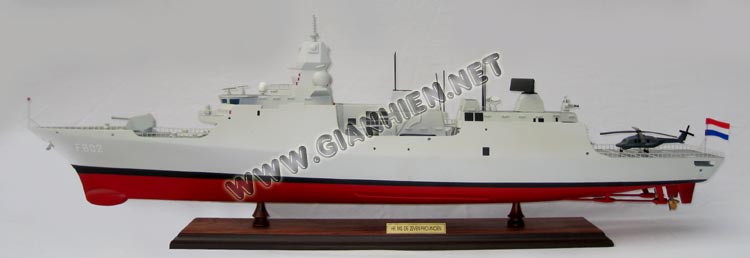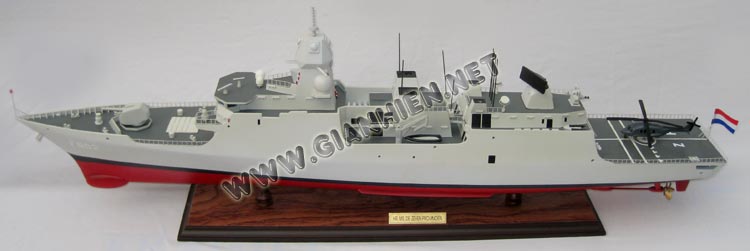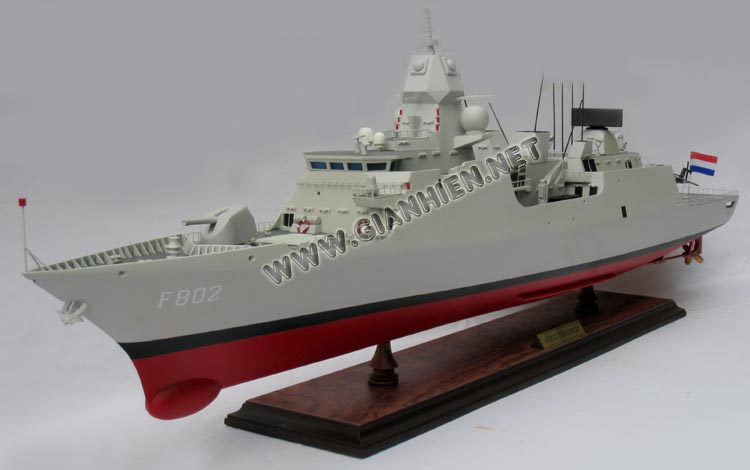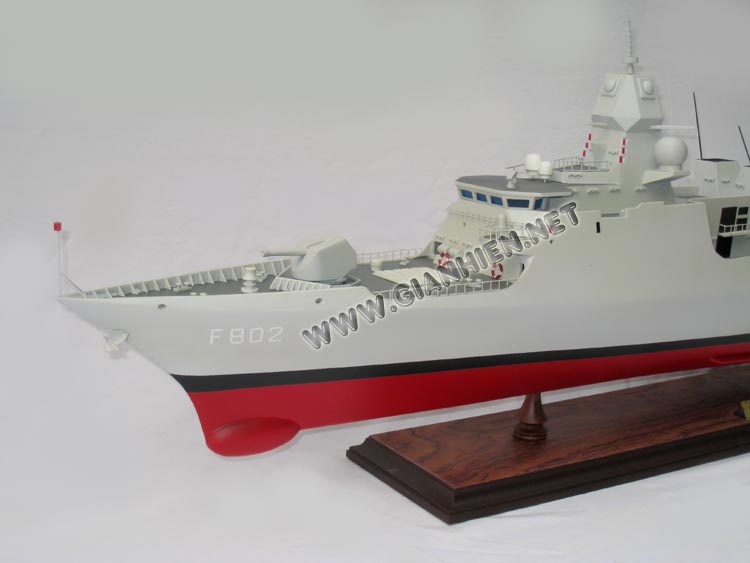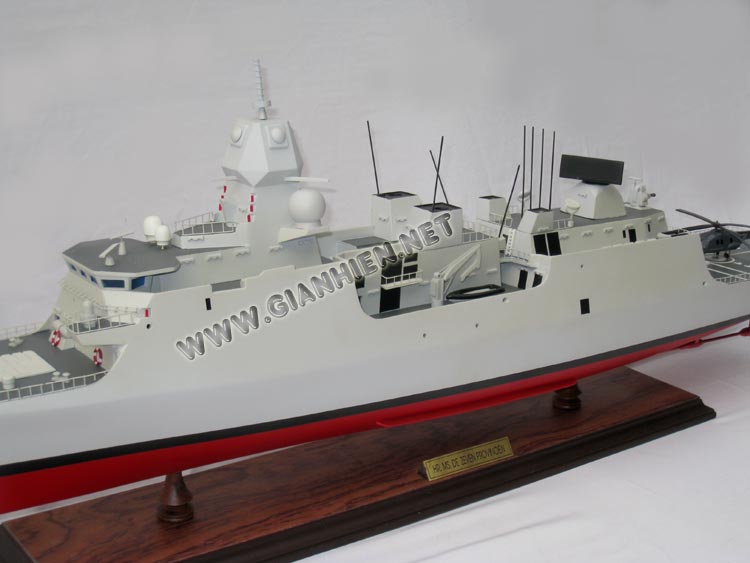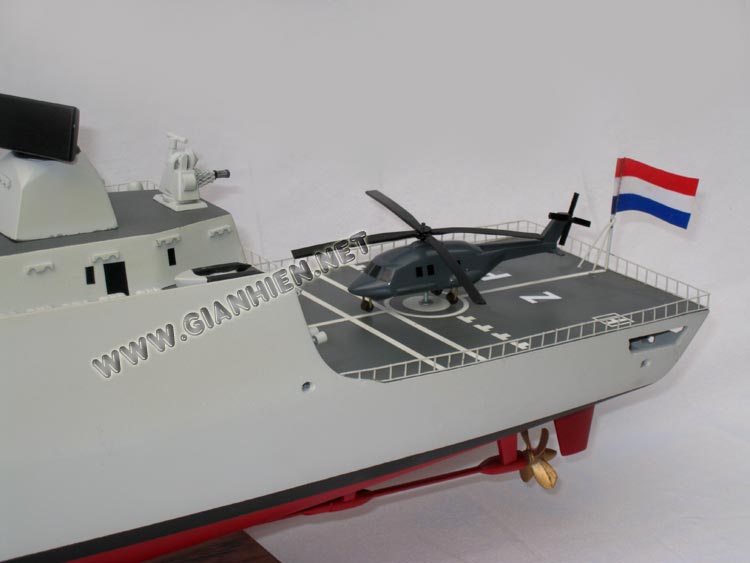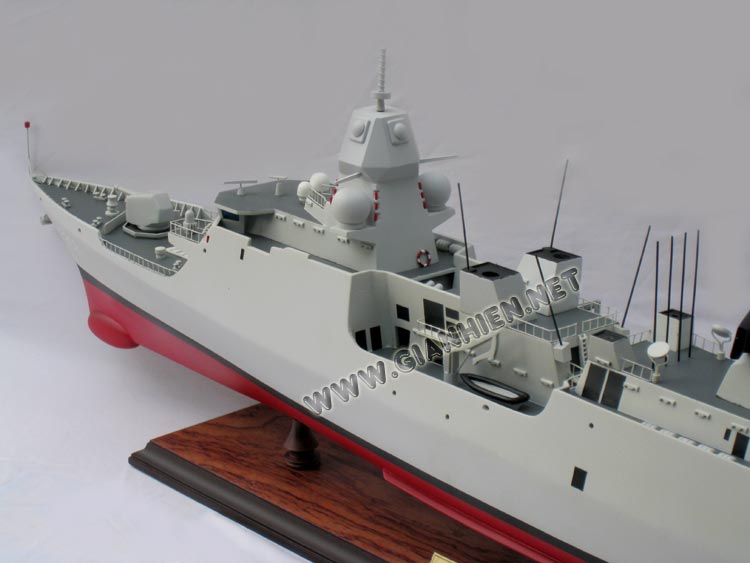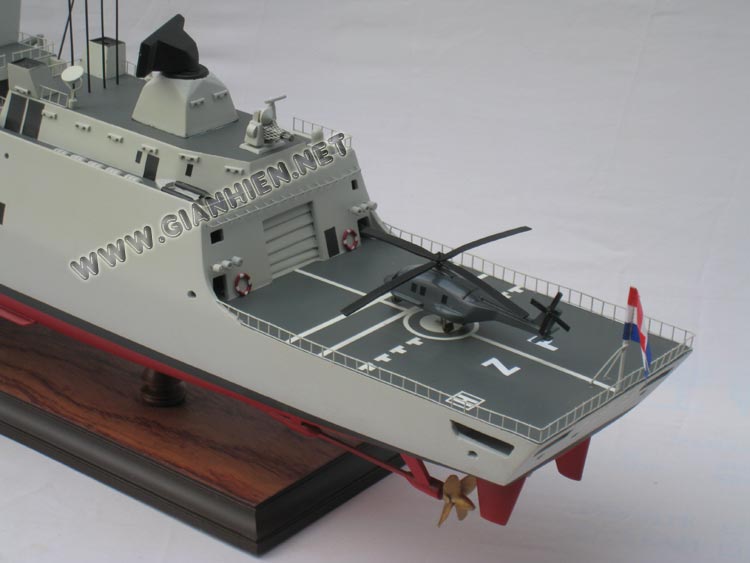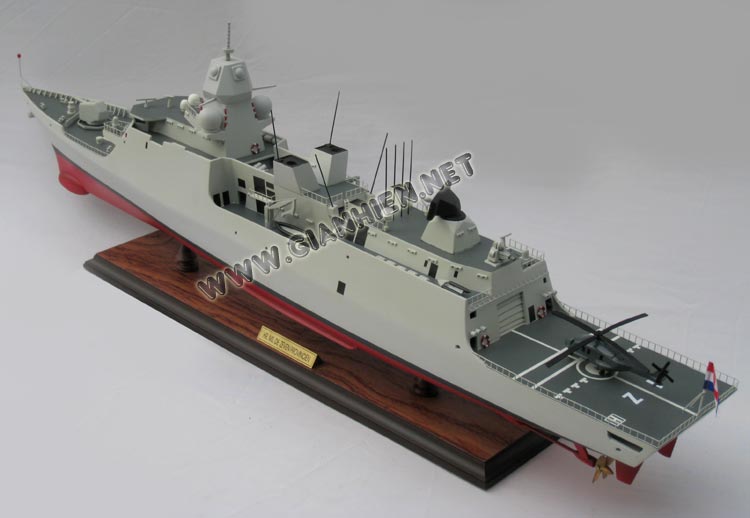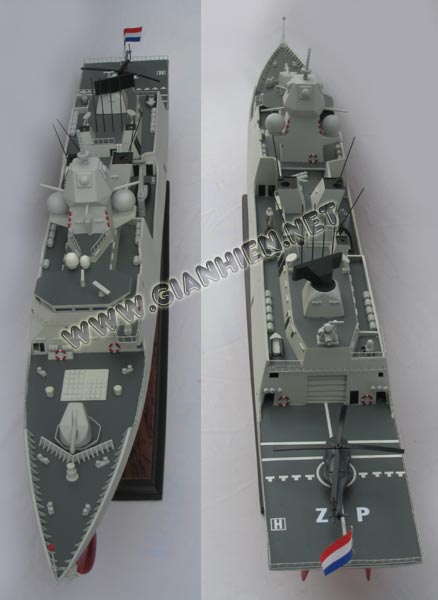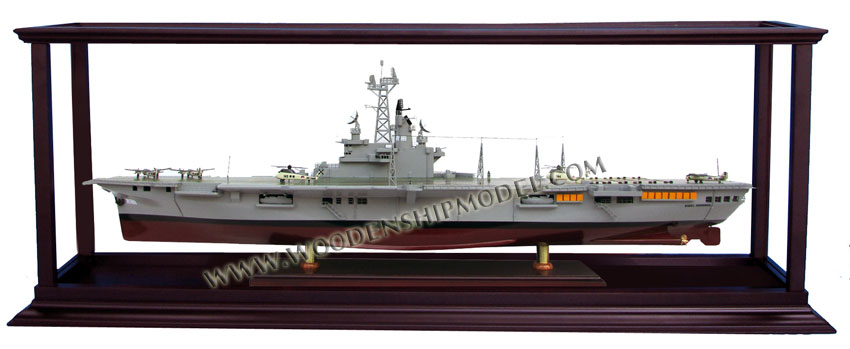|
HISTORY
Royal
Schelde of Vlissingen is built four air-defence guided-missile
destroyers of the De Zeven Provincien class for the Dutch navy, the
first two with a command (flagship) capability as successors to the
two Tromp class frigates and the second two without this capability
as successors to the two Jacob van Heemskerck class frigates.
Ordered in February 1995, De Zeven Provincien was commissioned in
April 2002, the Tromp in March 2003, the De Ruyter in 2004 and the
Evertsen in 2005.
The ships are the result of a tripartite programme initiated by
Germany, the Netherlands and Spain. Thus Germany and Spain are
building three Sachsen and four Alvaro de Bazan class frigates with
much ship platform commonality with the De Zeven Provincien class
ships. The design of the ship incorporates stealth features to
minimize the radar, thermal, acoustic, electrical and magnetic
signatures. Meanwhile compartmentalization, insulation, redundancy
in vital systems, power distribution, and structural features to
channel and retain blast and fragments combine for enhanced
survivability. For NBC protection the ship is subdivided into two
main citadels and one sub-citadel.
The core of the ship's operational capability is the SEWACO XI
combat data system developed by Thales Naval Nederland (originally
Signaal). The shorter-range SAM system is the Evolved Sea Sparrow
Missile (ESSM) developed by an international team led by Raytheon
Missile Systems with semi-active radar guidance and vectoring of the
rocket motor's thrust for greater range, speed and manoeuvrability.
The medium-range SAM system is based on the Raytheon Standard
Missile SM-2MR Block IIIA with a range of 70 km, speed of Mach 2.5
and semi-active radar guidance. Both the ESSM and SM-2MR are
launched from a 40-cell Mk 41 Vertical Launch System (VLS). The five
octuple launchers are installed with the caps almost flush with the
surface of the forecastle abaft the main gun. Expanded anti-ship
capability is provided by the Harpoon missile system located on the
raised deck immediately abaft the mast.
The ship's main gun is a 127-mm Otobreda L/54 weapon, and last-ditch
defence against anti-ship missiles ir provided by two 30-mm Thales
Naval Nederland Goalkeeper CIWS, one just forward of the mast and
the other on the roof of the helicopter hangar. There are also two
20-mm Oerlikon cannon (to port and starboard of the mast).
Short-range anti-submarine defence is vested in two 324-mm Mk 32
twin launchers (one on each side of the ship) for 24 Mk 46 Mod 5
torpedoes, Longer-range anti-submarine operations are entrusted to a
singleLynx (to be succeeded by the large NFH 90 from 2007)
helicopter stowed in a hangar just forward of the flight platform
(with a DCN Samahe handling system) located over the stern.
The ship's radar suite is also supplied by Thales Naval Nederland.
The SMART-L system above the hangar provides 3D air search, the APAR
(Active Phased Array Radar) round the mast provides air/surface
search and SM-2MR fire-control capability, and the Scout LPI (Low
Probability of Intercept) radar on the front of the mast provides
surface search. Other key Thales elements are the Sirius long-range
IR search and track system above the bridge and the Mirador optronic
surface surveillance system.
The sonar system is the STN Atlas Elektronik DSQS-24C bow-mounted
active search and attack equipment.
As indicated by its character as a CODOG system, the ship's
propulsion system has two independent elements. The two Rolls-Royce
Spey SM1C gas turbine units each provide 19 495 kW (26 150 shp) for
high-speed operations, while the two Stork-Wartsila 16V 26ST diesel
engines each provide 5070 kW (6 800 shp) for economical cruising.
The two gearboxes are installed in a separate transmission room, and
the ship has two propellers of the control lable-pitch type, and two
rudders that also provide roll stabilization.
|

